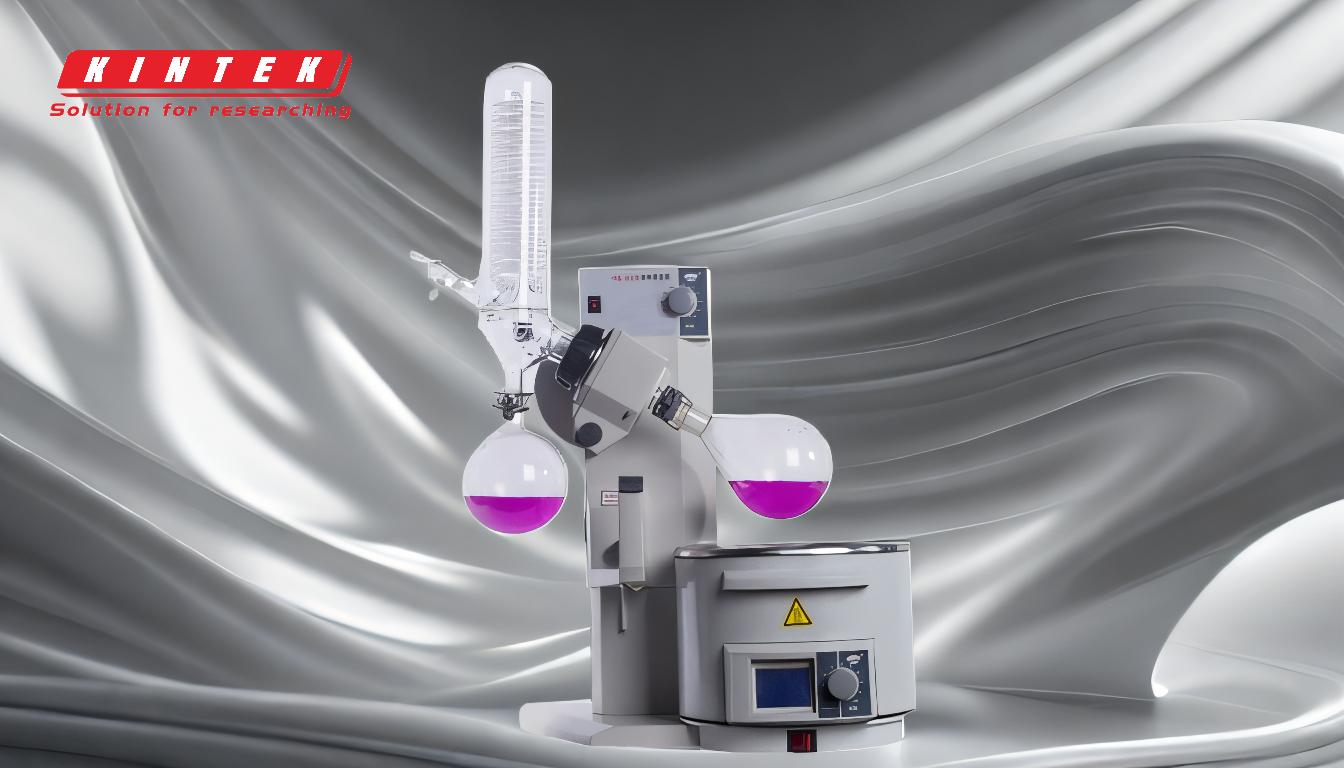A rotary evaporator, or rotovap, is a laboratory device used to efficiently and gently remove solvents from samples through evaporation. It operates by rotating a flask containing the sample, increasing the surface area for evaporation, while applying reduced pressure to lower the boiling point of the solvent. The solvent vapor is then condensed and collected, leaving behind a concentrated sample. The process involves a water bath for heating, a vacuum pump for pressure reduction, and a condenser for cooling and collecting the solvent. Proper operation ensures safe and effective solvent removal without damaging the sample.
Key Points Explained:

-
Purpose of a Rotary Evaporator:
- A rotary evaporator is designed to remove solvents from chemical compounds gently and efficiently.
- It is commonly used in laboratories for tasks such as concentrating solutions, purifying compounds, and recovering solvents.
-
Key Components:
- Rotating Flask: The flask containing the sample is rotated to increase the surface area, enhancing evaporation.
- Water Bath: Provides controlled heating to the flask, aiding in the evaporation process.
- Vacuum Pump: Reduces the pressure inside the system, lowering the boiling point of the solvent.
- Condenser: Cools the solvent vapor, converting it back into liquid form for collection.
- Receiving Flask: Collects the condensed solvent, separating it from the original sample.
-
Working Principle:
- The sample is placed in a round-bottom flask, which is then attached to the rotary evaporator.
- The flask is rotated to increase the surface area of the liquid, promoting faster evaporation.
- A vacuum is applied to reduce the pressure, allowing the solvent to boil at a lower temperature.
- The solvent vapor travels to the condenser, where it is cooled and collected in the receiving flask.
- The concentrated sample remains in the original flask.
-
Step-by-Step Operation:
- Preparation: Set the water bath to the desired temperature and ensure the condenser is connected to a water source.
- Assembly: Attach the sample flask to the rotary evaporator, securing it with a clip.
- Vacuum Application: Turn on the vacuum pump and close the tap to create reduced pressure within the system.
- Rotation: Start rotating the flask at an appropriate speed.
- Heating: Lower the flask into the water bath to begin heating the sample.
- Monitoring: Observe the evaporation process, adjusting the vacuum and rotation speed as needed.
- Completion: Once the solvent is removed, raise the flask out of the water bath, stop the rotation, and release the vacuum.
- Collection: Remove the flask and collect the concentrated sample.
-
Advantages:
- Efficiency: The rotating flask and reduced pressure significantly increase the rate of evaporation.
- Gentle Processing: Lower temperatures prevent thermal degradation of sensitive compounds.
- Solvent Recovery: The condensed solvent can be collected and reused, reducing waste.
-
Safety Considerations:
- Pressure Management: Always ensure the system is properly depressurized before removing the flask to prevent accidents.
- Temperature Control: Avoid overheating the sample to prevent decomposition or boiling over.
- Secure Attachment: Use clips to securely fasten the flask to prevent it from falling during rotation.
-
Applications:
- Chemical Synthesis: Used to concentrate reaction mixtures and purify products.
- Pharmaceuticals: Employed in drug development for solvent removal and compound purification.
- Food and Beverage: Utilized in the extraction and concentration of flavors and essences.
- Environmental Analysis: Applied in the extraction and concentration of analytes from environmental samples.
By understanding these key points, users can effectively operate a rotary evaporator to achieve efficient and safe solvent removal, ensuring optimal results in their laboratory processes.
Summary Table:
| Key Aspect | Details |
|---|---|
| Purpose | Gently removes solvents from samples for concentration or purification. |
| Key Components | Rotating flask, water bath, vacuum pump, condenser, receiving flask. |
| Working Principle | Rotates flask to increase surface area; reduces pressure to lower boiling point. |
| Advantages | High efficiency, gentle processing, solvent recovery. |
| Safety Considerations | Manage pressure, control temperature, secure flask attachments. |
| Applications | Chemical synthesis, pharmaceuticals, food & beverage, environmental analysis. |
Need a rotary evaporator for your lab? Contact us today to find the perfect solution!













